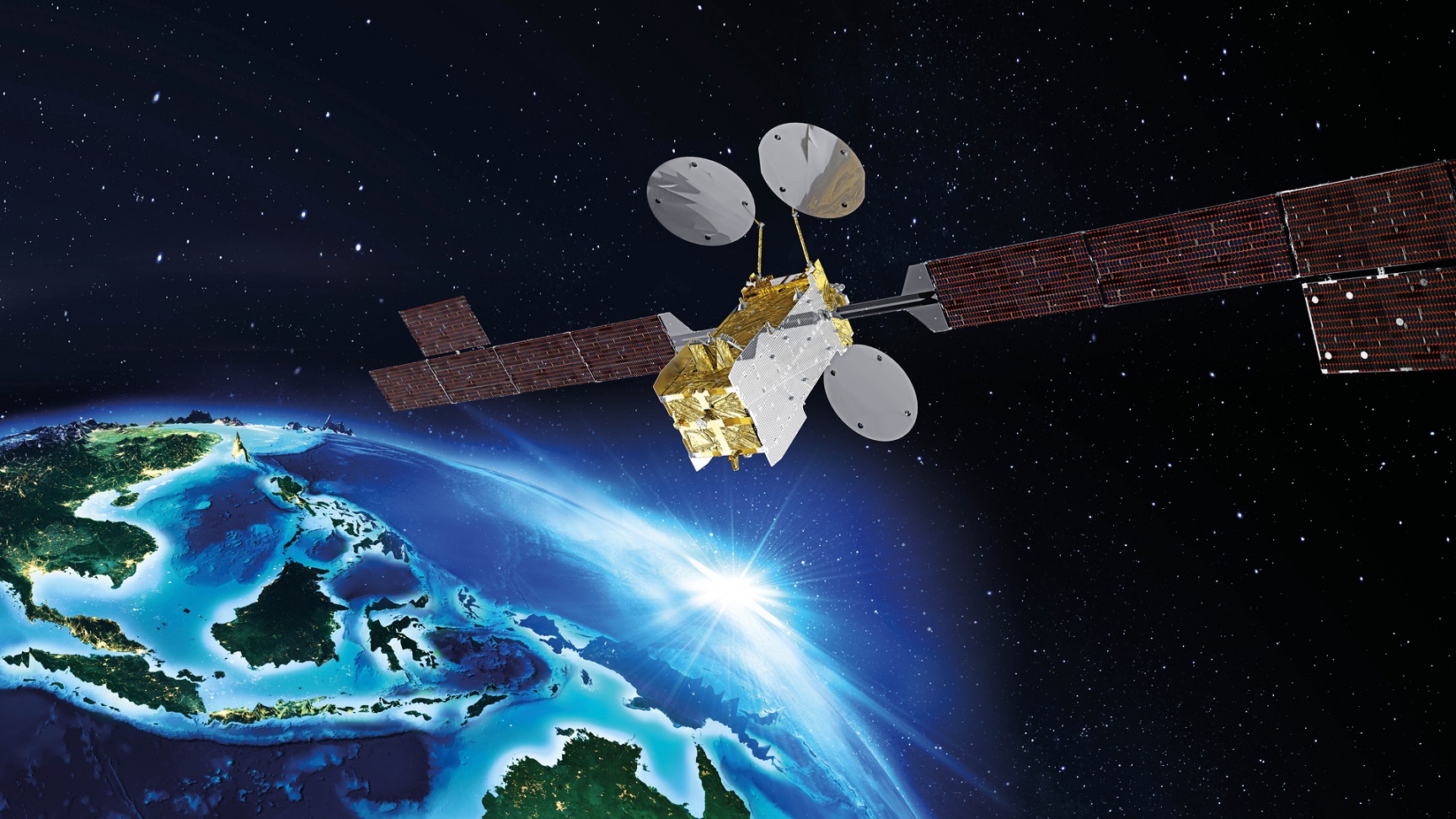
TAMPA, Fla. — Indonesia’s Satria-1 broadband satellite deployed its solar panels after launching on a SpaceX Falcon 9 to geosynchronous transfer orbit over the weekend, manufacturer Thales Alenia Space said June 19.
It will take about five months for Indonesia’s first very high throughput (VHTS) satellite to reach its 146 degrees East orbital slot via onboard electric propulsion, Thales Alenia Space spokesperson Sandrine Bielecki said.
Once it reaches its geostationary orbital slot late this year, Thales Alenia Space will need to conduct about three weeks of tests before Satria-1 (also known as Nusantara 3) can enter commercial service.
The $545 million satellite is slated to start providing around 150 gigabits per second of capacity across the thousands of islands in the Indonesian archipelago, and surrounding areas, by early 2024.
SpaceX launched the 4.6-metric-ton spacecraft June 18 at 6:21 p.m. Eastern from Cape Canaveral Space Force Station, Florida.
Satria-1 separated from Falcon 9 about 37 minutes later in a mission that also saw SpaceX return the rocket’s first-stage booster for reuse.
PT Satelit Nusantara Tiga, an Indonesian consortium led by domestic operator Pasifik Satelit Nusantara (PSN), is set to operate Satria-1 under a public-private partnership with the country’s government.
The successful launch is a key milestone for Indonesia’s broadband ambitions. It comes after financing and pandemic-related manufacturing delays forced the government to seek deadline extensions from international regulators to bring the satellite into use.
PSN is also in line to operate the geostationary Nusantara Lima satellite (also known as Nusantara 5), which Boeing is building for a SpaceX launch later this year.
Meanwhile, Thales Alenia Space aims to deliver a broadband satellite in 2024 called Telkom 113 for Telkomsat, a subsidiary of Indonesian state-owned telecoms operator Telkom.
Indonesia’s geography lends itself to satellite-based communications because of the operational and financial challenges of deploying terrestrial networks over a territory with more than 18,000 islands and islets — of which the government says 6,000 are inhabited.
However, foreign low Earth orbit broadband operators, including SpaceX’s, Starlink are also chasing this market opportunity.
Starlink is slated to be available in Indonesia in 2024, according to its availability map, following its commercial launch in the Philippines.